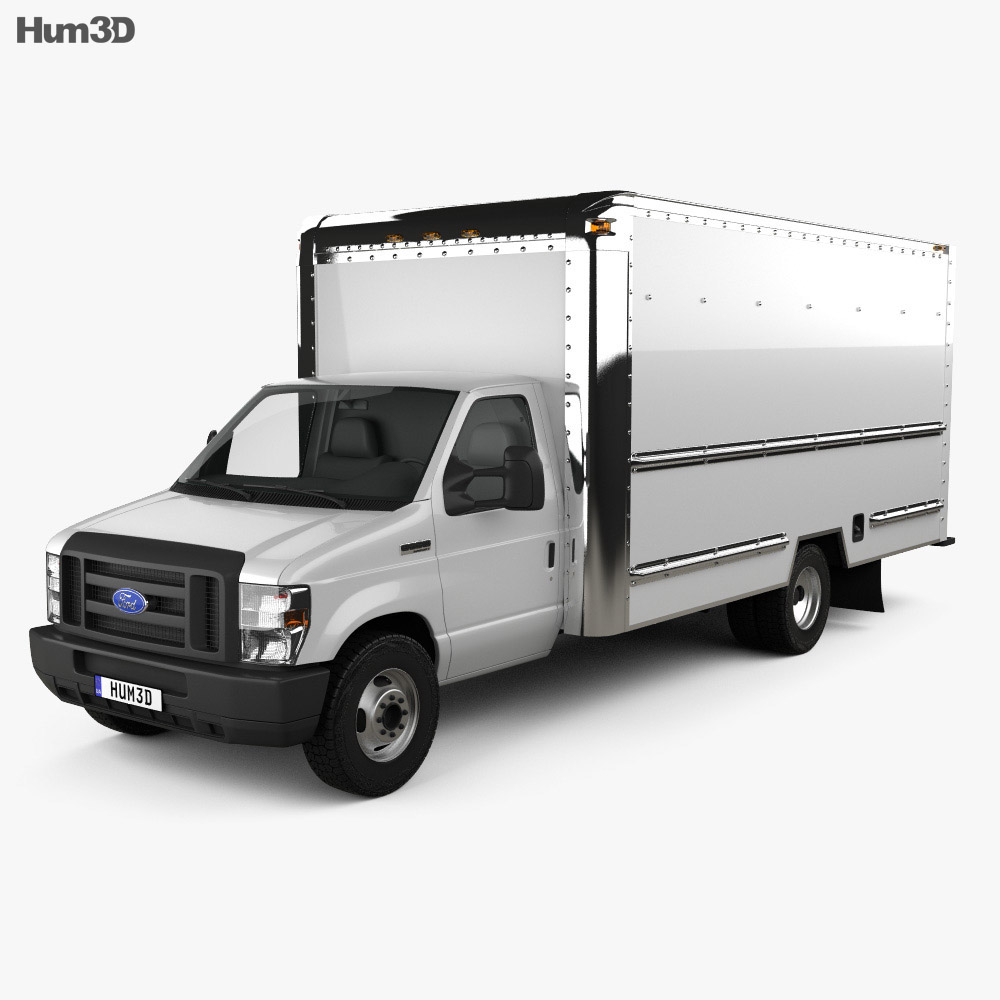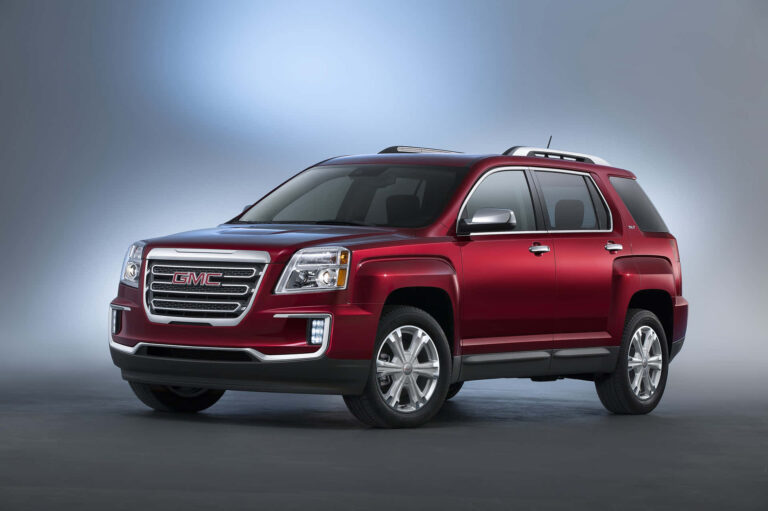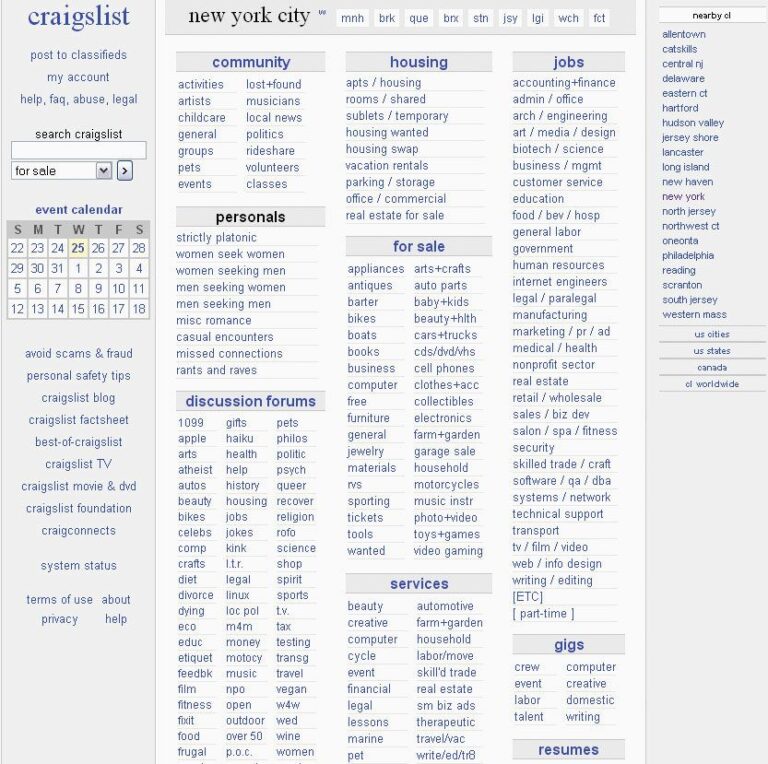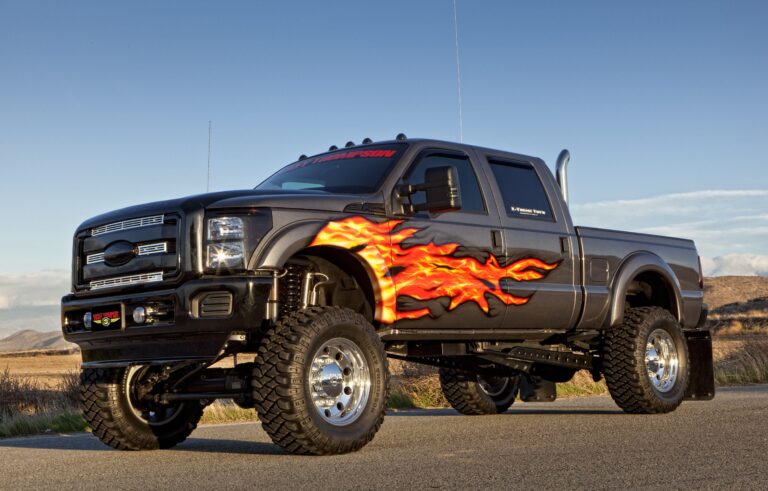Box Truck Dimensions: Your Comprehensive Guide to Choosing the Right Size
Box Truck Dimensions: Your Comprehensive Guide to Choosing the Right Size cars.truckstrend.com
In the world of moving, logistics, and small business operations, the box truck stands as an indispensable workhorse. From relocating a household across town to delivering goods for a burgeoning enterprise, these versatile vehicles offer the enclosed space and mobility needed for countless tasks. However, the true utility and efficiency of a box truck hinge entirely on one critical factor: its dimensions. Understanding box truck dimensions isn’t just about knowing how long or tall a vehicle is; it’s about ensuring your cargo fits, navigating routes safely, complying with regulations, and ultimately, saving time, money, and stress.
This comprehensive guide will delve into every facet of box truck dimensions, breaking down what they mean, why they matter, and how to leverage this knowledge to make informed decisions for your next project or business operation.
Box Truck Dimensions: Your Comprehensive Guide to Choosing the Right Size
Deconstructing Box Truck Dimensions: What to Measure
When we talk about box truck dimensions, we’re referring to a series of measurements that define the vehicle’s physical footprint and its available cargo space. These can be broadly categorized into exterior and interior measurements, with a few crucial specifics often overlooked.
-
Exterior Dimensions (Length, Width, Height):
- Exterior Length: The total length of the truck from bumper to bumper. This is crucial for parking, maneuvering in tight spaces, and understanding turning radii.
- Exterior Width: The total width of the truck, including side mirrors. This impacts lane compatibility, narrow streets, and gate clearances.
- Exterior Height: The total height from the ground to the highest point of the truck, usually the top of the box. This is paramount for avoiding low bridges, tunnels, drive-thrus, and parking garage ceilings. This is often displayed prominently on rental trucks.

-
Interior Dimensions (Length, Width, Height):

- Interior Length (Cargo Box Length): The usable length of the cargo area, from the inside of the rear door to the bulkhead behind the cab. This is the primary measurement for determining how many linear feet of items you can load.
- Interior Width (Cargo Box Width): The usable width of the cargo area. It’s important to note that this is often slightly less than the exterior width due to the thickness of the box walls.
- Interior Height (Cargo Box Height): The usable height from the cargo floor to the interior ceiling of the box. This is critical for standing up tall items like refrigerators, wardrobes, or shelving units.

-
Door Opening Dimensions:
- Door Opening Height: The clear vertical space available when the rear door is fully open. This can be significantly less than the interior height, especially with roll-up doors that retract into the ceiling. It’s a common mistake to assume the interior height is the door height.
- Door Opening Width: The clear horizontal space available when the rear door is fully open. This dictates whether wide items like sofas or appliances can physically pass through.
-
Deck Height (Load Floor Height):
- The height from the ground to the floor of the cargo area. A lower deck height makes loading and unloading easier, especially for heavy items, and can reduce the need for long ramps.
-
Wheel Wells (Intrusion):
- Inside the cargo area, the wheel wells protrude into the usable space. While they don’t affect the overall length or height, they can significantly impact the effective width at certain points, especially for wide, flat items. Always factor these in when calculating usable space.
Why Dimensions Dictate Your Success (and Avoid Headaches)
Understanding these dimensions isn’t an academic exercise; it’s a practical necessity that directly impacts the success and safety of your operations.
- Cargo Fit and Protection: The most obvious reason. Knowing interior dimensions ensures all your items fit without being crammed, risking damage. Overestimating space leads to multiple trips; underestimating leads to wasted space and potential shifting during transit.
- Navigational Safety: Exterior dimensions, particularly height, are paramount for safe driving. Striking a low bridge or tunnel can result in severe vehicle damage, injury, and significant legal penalties. Width is crucial for navigating narrow city streets, alleys, and driveways.
- Legal Compliance: Many jurisdictions have legal limits on vehicle height, length, and weight on certain roads or in specific areas. Operating an oversized vehicle where it’s prohibited can lead to fines and forced detours.
- Operational Efficiency: A truck that’s too small means more trips, more fuel, and more time. One that’s too large might be harder to maneuver, consume more fuel than necessary, and incur higher rental costs or fuel expenses. The right size optimizes fuel consumption and reduces transit time.
- Loading and Unloading Logistics: Deck height and door opening dimensions directly impact how easily and safely items can be loaded and unloaded. A high deck might necessitate a ramp or liftgate, while a narrow door opening might make it impossible to load certain large items.
- Cost Efficiency: Renting a truck that’s too large means paying for unused space and consuming more fuel. Renting one that’s too small means potential damage to items, multiple trips, or having to rent a second vehicle – all costing more money.
Common Box Truck Sizes and Their Ideal Applications
Box trucks are typically categorized by their interior cargo box length. While manufacturers and rental companies might have slight variations, here’s a general breakdown of common sizes and their typical uses:
-
10-12 Foot Box Trucks:
- Approximate Cargo Volume: 300-450 cubic feet
- Typical Usage: Studio apartments, dorm rooms, small one-bedroom apartments, local deliveries of small items, hauling appliances, moving small office setups. These are the easiest to drive and park.
-
14-16 Foot Box Trucks:
- Approximate Cargo Volume: 600-800 cubic feet
- Typical Usage: 1-2 bedroom apartments, small homes, moving a few rooms of furniture, small business deliveries (e.g., catering supplies, light construction materials). A good mid-range option for many DIY movers.
-
20 Foot Box Trucks:
- Approximate Cargo Volume: 1000-1200 cubic feet
- Typical Usage: 2-3 bedroom homes, larger apartments, medium-sized business deliveries, transporting multiple large appliances or pieces of furniture. A popular choice for residential moves.
-
24-26 Foot Box Trucks:
- Approximate Cargo Volume: 1400-1700 cubic feet
- Typical Usage: 3-5+ bedroom homes, large residential moves, commercial freight, extensive business inventory transport, long-distance moves. These are the largest non-CDL (Commercial Driver’s License) box trucks available and require more skill to drive.
The Crucial Distinction: Interior vs. Exterior & Door Openings
It bears repeating: never confuse exterior dimensions with interior usable space, and always pay attention to door opening dimensions.
Exterior dimensions are what you need for driving. If you’re planning a route, you need to know the exterior height to clear bridges and tunnels. If you’re parking, you need the exterior length and width.
Interior dimensions are what you need for packing. This is where your furniture, boxes, and appliances will reside. But even here, there’s a caveat. The interior height of the box might be 8 feet, but if the door opening height is only 7 feet, that 7.5-foot tall cabinet simply won’t fit through the back. Similarly, the interior width might be 7.5 feet, but if the door opening width is only 6.5 feet due to the door mechanism, your 7-foot sofa won’t clear.
Always confirm all three sets of dimensions – exterior, interior, and door opening – with the rental company or vehicle specifications.
Beyond Size: Understanding Weight Capacity (Payload & GVWR)
While dimensions define the volume, weight capacity determines how much you can physically load into that volume. Overloading a box truck is incredibly dangerous, leading to poor handling, increased stopping distances, tire blowouts, and potential legal penalties.
- Gross Vehicle Weight Rating (GVWR): This is the maximum permissible total weight of the vehicle itself, including its fuel, driver, passengers, and all cargo. It’s a critical safety and legal rating.
- Payload Capacity: This is the maximum weight of cargo (and often passengers) that the truck is designed to carry. It’s calculated by subtracting the truck’s empty (curb) weight from its GVWR.
Even if your items fit dimensionally, they might exceed the payload capacity. For instance, a 16-foot truck might have enough volume for a 2-bedroom apartment, but if that apartment is filled with heavy books, concrete statues, or dense machinery, you could easily exceed the weight limit. Always consider both volume and weight.
Navigating the Urban Jungle: Dimension-Related Restrictions
Operating a box truck, especially a larger one, comes with specific navigational challenges related to its dimensions:
- Bridge Clearances and Tunnel Heights: This is the most critical and potentially dangerous restriction. Low bridges and tunnels are common in older cities or rural areas. Always check route restrictions and look for posted height limits. Many rental trucks have the exterior height prominently displayed inside the cab as a reminder.
- Residential Street Restrictions: Some residential areas, particularly those with narrow streets, tight turns, or historical significance, might have length or weight restrictions for commercial vehicles, including larger box trucks.
- Parking Challenges: Finding suitable parking for a long and wide box truck can be incredibly difficult in urban environments or even suburban residential areas. Always scout parking beforehand.
- Delivery Dock Compatibility: If you’re making commercial deliveries, ensure your truck’s dimensions (especially height and deck height) are compatible with the loading docks at your destination.
Practical Advice: Choosing the Right Box Truck for Your Needs
Making an informed decision about box truck dimensions can save you a world of trouble.
-
Assess Your Cargo Thoroughly:
- Volume: List every item you plan to move. For furniture, note dimensions (L x W x H). For boxes, estimate the number. Use online calculators or simply visualize the space needed.
- Weight: Be mindful of heavy items like appliances, safes, books, or dense equipment.
- Awkward Shapes: Items like L-shaped sofas, grand pianos, or large artwork require more careful planning and often more linear space than their cubic volume suggests.
-
Measure Everything Critical: Don’t just estimate. Measure your largest furniture pieces (sofa, refrigerator, bed frame, wardrobe) and compare them to the door opening and interior dimensions of the truck you’re considering.
-
Consider Your Route and Destination:
- Are there any known low bridges or tunnels on your path?
- Are the streets at your pickup and delivery locations narrow?
- Is there ample parking available?
- Are there any steep hills or tight turns that a larger truck might struggle with?
-
Factor in Loading/Unloading Logistics:
- Do you need a ramp, or will you need a truck with a liftgate for very heavy items?
- How high is the deck? Will you be able to easily lift items onto it?
- Is there enough space to maneuver items once inside the truck?
-
Always Err on the Side of Slightly Larger: If you’re debating between two sizes and the larger one is only marginally more expensive, go with the larger one. It’s far better to have a little extra space than to run out and have to make a second trip or leave items behind.
Overcoming Dimension-Related Challenges
- Pre-plan Your Route: Use online mapping tools (like Google Maps with "avoid highways" or "truck routes" if available) to identify potential height restrictions. Check local municipality websites for commercial vehicle restrictions.
- Load Strategically: Place the heaviest items on the bottom and evenly distributed over the axles. Load tall items against the walls, and secure everything with moving blankets and tie-downs to prevent shifting and damage.
- Utilize Proper Equipment: Dollies, hand trucks, furniture pads, and tie-down straps are essential for safe and efficient loading and unloading, regardless of truck size. For very heavy items, consider hiring professional movers or a truck with a liftgate.
- Practice Driving (If Unfamiliar): If you’re new to driving a large box truck, take it for a short, empty drive in a low-traffic area to get a feel for its turning radius, braking, and overall handling before your main trip.
Estimated Rental Costs by Box Truck Size
While dimensions themselves don’t have a price, the size of the box truck directly influences its rental cost. The following table provides estimated rental costs for common box truck sizes. Please note these are averages and estimates; actual prices vary significantly based on location, rental company, demand, time of year, rental duration, and specific promotions.
| Box Truck Size (Length) | Approximate Cargo Volume (Cu Ft) | Typical Usage | Estimated Daily Rental Cost (Avg.) | Estimated Per-Mile Charge (Avg.) |
|---|---|---|---|---|
| 10-12 ft | 300 – 450 | Studio/1-bed apt, small deliveries | $29 – $49 | $0.59 – $0.89 |
| 14-16 ft | 600 – 800 | 1-2 bed apt, small home, local freight | $39 – $69 | $0.69 – $0.99 |
| 20 ft | 1000 – 1200 | 2-3 bed home, medium commercial | $49 – $89 | $0.79 – $1.09 |
| 24-26 ft | 1400 – 1700 | 3-5+ bed home, large commercial freight | $59 – $109 | $0.89 – $1.19 |
Disclaimer: Prices are estimates only and do not include taxes, insurance, fuel, or additional fees. Weekend rates, one-way rentals, and peak seasons typically incur higher costs.
Frequently Asked Questions (FAQ)
Q1: What is the standard width of a box truck?
A1: The exterior width of most box trucks typically ranges from 8 feet to 8 feet 6 inches (2.4 to 2.6 meters). Interior width is usually slightly less, around 7 feet 6 inches to 8 feet, due to the thickness of the box walls.
Q2: How tall is a box truck?
A2: Exterior height varies by size, but generally ranges from 9 feet to 13 feet. Smaller 10-12 ft trucks might be around 9-10 ft tall, while larger 24-26 ft trucks can be 12-13 feet tall. Interior height is typically between 6 feet 6 inches and 8 feet. Always check the specific truck’s dimensions.
Q3: Can I drive a 26ft box truck with a regular driver’s license?
A3: In most US states and Canadian provinces, you can drive a 26ft box truck with a standard Class D (or equivalent) driver’s license, provided its Gross Vehicle Weight Rating (GVWR) is below 26,001 pounds. Trucks exceeding this GVWR typically require a Commercial Driver’s License (CDL). Always verify the specific GVWR of the truck and your local licensing requirements.
Q4: How do I know what size truck I need for moving?
A4: Start by making a detailed inventory of all items you plan to move, especially large furniture and appliances. Measure their dimensions. Then, use online moving truck size calculators (provided by rental companies) or consult with rental agents. As a general rule, a 10-12 ft truck is for studios/small apartments, 16 ft for 1-2 bedrooms, 20 ft for 2-3 bedrooms, and 24-26 ft for 3+ bedrooms or large homes. When in doubt, go slightly larger.
Q5: What’s the difference between a box truck and a moving truck?
A5: Functionally, there’s often no difference. "Box truck" is the generic term for a truck with a rectangular cargo area separate from the cab. "Moving truck" is often a box truck specifically marketed or equipped (e.g., with tie-downs, ramps, or moving pads) for household relocation. Rental companies like U-Haul, Penske, and Budget primarily offer box trucks for moving purposes.
Q6: Are wheel wells included in interior dimensions?
A6: The stated interior dimensions (length, width, height) typically refer to the overall maximum usable space. However, wheel wells are structural components that protrude into the cargo area, reducing the effective width at floor level in those specific spots. You must account for them when planning to load wide items. Rental companies usually provide diagrams showing wheel well intrusion.
Conclusion
Understanding box truck dimensions is more than just a technical detail; it’s a fundamental aspect of efficient, safe, and cost-effective transportation. By meticulously considering exterior measurements for navigation, interior dimensions for cargo capacity, and critical door opening dimensions for loading, you empower yourself to select the perfect vehicle for any task. This knowledge mitigates risks, optimizes resources, and ensures that your goods, whether personal belongings or commercial inventory, reach their destination without a hitch. So, before you hit the road, remember: measure twice, load once, and drive safely.




